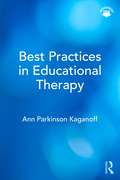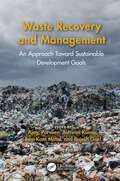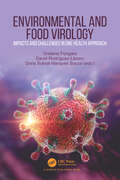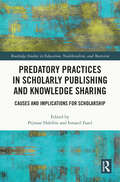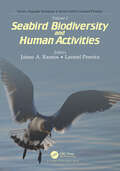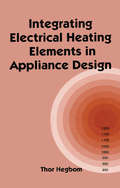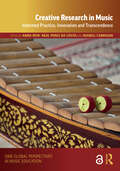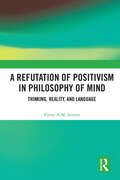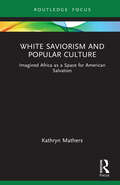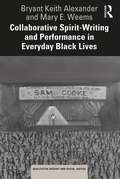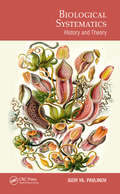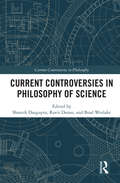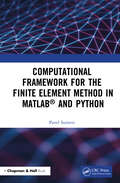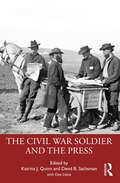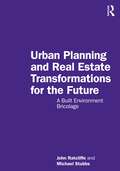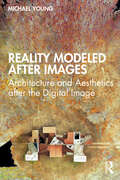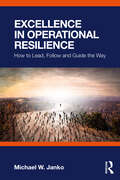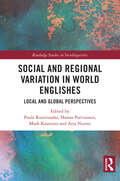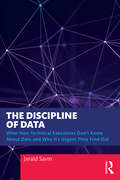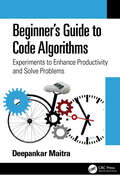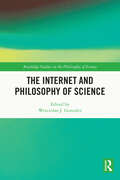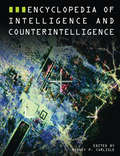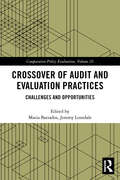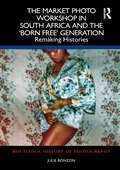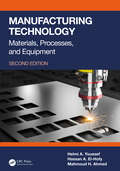- Table View
- List View
Best Practices in Educational Therapy
by Ann Parkinson KaganoffBest Practices in Educational Therapy provides actionable strategies and solutions for novice and veteran educational therapists. Given the diverse backgrounds of educational therapists and the varieties of specialization and client types, there is no single approach for all therapists and all clients. This book is built on a foundation of individualized intensive intervention, offering generalized principles of application across many contexts. Featuring practices informed by documented experiences of educational therapists as well as research in memory and cognition, attention, speech/language, specific syndromes, and the role of emotion in learning, this well-rounded guide will serve educational therapists at all stages in their career.
Waste Recovery and Management: An Approach Toward Sustainable Development Goals
by Parveen Ashwini Kumar Ravi Kant Mittal Rajesh Goel AjaySustainable development approaches cannot be met unless waste management is addressed as a priority. Waste Recovery and Management: An Approach Toward Sustainable Development Goals presents a comprehensive examination of environmental pollution and health hazards caused by differing types of waste, its recycling and other e-waste management strategies, and potential political and legal interventions. It also presents the available carbon-recycling methods and investigates how these might be applied to reinforce waste management in industrialized countries as well as developing and emerging economies. Each chapter includes valuable data and case studies that serve as practical guidance for academicians, researchers, and stakeholders for quantifying the impacts of waste, and for planning integrated solid waste collection and treatment systems, thereby working toward sustainability at a global level.Features: Covers both traditional and new technologies for identifying and categorizing the sources and nature of various types of waste Provides methods for the safe disposal of municipal solid wastes, plastic waste, bio-medical wastes, hazardous wastes, and e-wastes Explains practical measures to cover the broad spectrum of everyday applications of waste management for environmental sustainability Contains a focused discussion of the current scenario and future research directions for different types of waste in each chapter
Environmental and Food Virology: Impacts and Challenges in One Health Approach
by Gislaine Fongaro David Rodr Doris Sobral Marques SouzaEnteric pathogenic viruses are a major challenge in public health, as they represent a major concern with a severe global impact to the economy, commerce, and health systems. Consequently, their active monitoring can allow preventive surveillance and the discovery of new viruses, exemplifying an important epidemiological and health control tool.In an unprecedented way, this book addresses the general characteristics of enteric viruses and their environmental transmission, with a particular emphasis on their structures, stability, routes of transmission and the use of bioindicators for epidemiological monitoring and control. In addition, this book will also address the recent developments for viral concentration and detection in environmental and food samples and the challenges for the control of environmental and food viruses to reduce microbiological risk for final consumers.
Predatory Practices in Scholarly Publishing and Knowledge Sharing: Causes and Implications for Scholarship (Routledge Studies in Education, Neoliberalism, and Marxism)
by Pejman Habibie Ismaeil FazelThis volume offers comprehensive examination of “predatory” practices in scholarly publishing, and highlights emergent issues around predatory journals, Open Access (OA), and scam conferences.Chapters engage multiple methodologies, including corpus, discourse, and genre analysis, as well as historical and autoethnographic approaches to offer in-depth, empirical analyses of the causes, practices, and implications of predatory practices for scholars. Contributors span a broad range of disciplines and geolocations, presenting a diverse range of perspectives. The volume also outlines effective initiatives for the identification of predatory practices and considers steps to increase understanding of viable publishing options.Providing a needed exploration of predatory research practices, this book will appeal to scholars and researchers with interests in higher education, publishing, and communication ethics.
Volume 1: Seabird Biodiversity and Human Activities (Aquatic Sciences)
by Jaime A. RamosSeabirds are global travellers connecting oceans and seas all over the world, and facing multiple threats at local and global scales. Seabirds are long-lived top predators, reflecting changes at lower trophic levels, and are good models to assess ecological changes produced by human societies. Thus, world-wide collaborations are needed to understand seabird ecology and to develop effective conservation measures benefitting both humans and seabird populations.This book provides a modern overview on seabird biodiversity studies: it begins by covering the most up-to-date techniques to study seabirds, and then focus on pragmatic issues related with interactions between seabirds and humans, the use of seabirds as ecological indicators and conservation of seabirds. It gives an updated insight on all these topics and highlights gaps that need further development for a comprehensive understanding of the relationships between seabirds and human actions.This book covers the response of the seabird research community to a biodiversity crisis aiming to contribute towards environmental sustainability. It should provide inspiration to a wide range of professionals and students, including the much needed world-wide collaboration between research groups and practitioners. In this way seabird research and conservation provide an inspiration for the solution of global issues such as climate change.
Integrating Electrical Heating Elements in Product Design (ISSN #Vol. 101)
by Thor HegbomOffers details on the utilization of electrical heating elements in consumer appliance design and industrial processes. The text includes basic theory, metallurgy and production advice for developing more reliable and cost-effective heaters. It provides tables comparing resistivity and surface resistance of different materials, and listing the resistance and weight per metre as well as surface per ohm of whole and half B&S wire and ribbon sizes for common standard resistance heating alloys. The book also contains calculation equations suitable for use in BASIC programs.
Creative Research in Music: Informed Practice, Innovation and Transcendence (ISME Series in Music Education)
by Anna Reid Costa, Neal Peres Da Jeanell CarriganCreative Research in Music explores what it means to be an artistic researcher in music in the twenty-first century. The book delineates the myriad processes that underpin successful artistic research in music, providing best practice exemplars ranging from Western classical art to local indigenous traditions, and from small to large-scale, multi-media and cross-cultural work formats. Drawing on the richness of creative research work at key institutions in South-East Asia and Australian, this book examines the social, political, historical and cultural driving forces that spur and inspire excellence in creative research to extend and to cross boundaries, to sustain our music industry, to advocate for the importance of music in our world, and to make it clear that music matters.In the chapters, our authors present the ideas of informed practice, innovation and transcendence from diverse international perspectives. Each of these three themes has an introductory section where the theme is explored and the chapters in that section introduced. Taken as a whole, the book discusses how the themes in combination, with reference to the authorial group, are able to transform music pedagogy and performance for our global and complex world.Chapter 9 of this book is freely available as a downloadable Open Access PDF at http://www.taylorfrancis.com under a Creative Commons Attribution-Non Commercial-No Derivatives (CC-BY-NC-ND) 4.0 license.
A Refutation of Positivism in Philosophy of Mind: Thinking, Reality, and Language
by Pieter A.M. SeurenThis book argues that positivism, though now the dominant paradigm for both the natural and the human sciences, is intrinsically unfit for the latter. In particular, it is unfit for linguistics and cognitive science, where it is ultimately self-destructive, since it fails to account for causality, while the mind, the primary object of research of the human sciences, cannot be understood unless considered to be an autonomous causal force. Author Pieter Albertus Maria Seuren, who died shortly after this manuscript was finished and after a remarkable career, reviews the history of this issue since the seventeenth century. He focuses on Descartes, Leibniz, British Empiricism and Kant, arguing that neither cognition nor language can be adequately accounted for unless the mind is given its full due. This implies that a distinction must be made—following Alexius Meinong, but against Russell and Quine—between actual and virtual reality. The latter is a product of the causally active mind and a necessary ingredient for the setting up of mental models, without which neither cognition nor language can function. Mental models are coherent sets of propositions, and can be wholly or partially true or false. Positivism rules out mental models, blocking any serious semantics and thereby reducing both language and cognition to caricatures of themselves. Seuren presents a causal theory of meaning, linking up language with cognition and solving the old question of what meaning actually amounts to.Key Features: Provides a fundamental reassessment of the methodology of the humanities Makes a distinctive contribution to the conceptual foundations of linguistics and philosophy of mind Explores the philosophical and historical origins of central developments in the human sciences in the past 100 years Offers a new approach to ontology and epistemology in the scientific study of the creative human mind and its products.
White Saviorism and Popular Culture: Imagined Africa as a Space for American Salvation (Routledge Focus on Media and Humanitarian Action)
by Kathryn MathersThis book interrogates the white savior industrial complex by exploring how America continues to present an imagined Africa as a space for its salvation in the 21st century.Through close readings of multiple mediated sites where Americans imagine Africa, White Saviorism and Popular Culture examines how an era of new media technologies is reshaping encounters between Africans and westerners in the 21st century, especially as Africans living and experiencing the consequences of western imaginings are also mobilizing the same mediated spaces. Kathryn Mathers emphasizes that the articulation of different forms of humanitarian engagement between America and Africa marks the necessity to interrogate the white savior industrial complex and the ways Africa is being asked to fulfill American needs as life in the United States becomes increasingly intolerable for Black Americans. Drawing on case studies from Savior Barbie (@barbiesavior) to Black Panther and Black is King, Mathers posits that global imperialism not only still reigns, but that it also disguises white supremacy by outsourcing Black American emancipation onto an imagined Africa.This is crucial reading for courses on the cultural politics of representation, particularly in relation to race, social media and popular culture, as well as anyone interested in issues of representation in the global humanitarianism industry.
Collaborative Spirit-Writing and Performance in Everyday Black Lives (ISSN)
by Bryant Keith Alexander Mary E. WeemsCollaborative Spirit-Writing and Performance in Everyday Black Lives is about the interconnectedness between collaboration, spirit, and writing. It is also about a dialogic engagement that draws upon shared lived experiences, hopes, and fears of two Black persons: male/female, straight/gay. This book is structured around a series of textual performances, poems, plays, dialogues, calls and responses, and mediations that serve as claim, ground, warrant, qualifier, rebuttal, and backing in an argument about collaborative spirit-writing for social justice. Each entry provides evidence of encounters of possibility, collated between the authors, for ourselves, for readers, and society from a standpoint of individual and collective struggle. The entries in this Black performance diary are at times independent and interdependent, interspliced and interrogative, interanimating and interstitial. They build arguments about collaboration but always emanate from a place of discontent in a caste system, designed through slavery and maintained until today, that positions Black people in relation to white superiority, terror, and perpetual struggle.With particular emphasis on the confluence of Race, Racism, Antiracism, Black Lives Matter, the Trump administration, and the Coronavirus pandemic, this book will appeal to students and scholars in Race studies, performance studies, and those who practice qualitative methods as a new way of seeking Black social justice.
Biological Systematics: History and Theory (Species and Systematics)
by Igor PavlinovThis volume reviews the historical roots and theoretical foundations of biological systematics in an approachable text. The author outlines the structure and main tasks of systematics. Conceptual history is characterized as a succession of scientific revolutions. The philosophical foundations of systematic research are briefly reviewed as well as the structure and content of taxonomic theories. Most important research programs in systematics are outlined. The book includes analysis of the principal problematic issues as "scientific puzzles" in systematics. This volume is intended for professional taxonomists, biologists of various specialties, students, as well as all those interested in the history and theory of biology and natural sciences.Key Features Considers the conceptual history of systematics as the framework of evolutionary epistemology Builds a hierarchically organized quasi-axiomatic system of taxonomic theory Contends that more reductionist taxonomic concepts are less objective Supports taxonomic pluralism by non-classic philosophy of science as a normal condition of systematics Documents that "taxonomic puzzles" result from conflict between monistic and pluralistic attitudes Related Titlesde Queiroz, K. et al., eds. Phylonyms: A Companion to the PhyloCode (ISBN 978-1-1383-3293-5)Sigwart, J. D. What Species Mean: A User's Guide to the Units of Biodiversity (ISBN 978-1-4987-9937-9)Rieppel, O. Phylogenetic Systematics: Haeckel to Hennig (ISBN 978-1-4987-5488-0)Wilkins, J. S. Species: The Evolution of the Idea, 2nd ed. (ISBN 978-1-1380-5574-2)
Current Controversies in Philosophy of Science (Current Controversies in Philosophy)
by Shamik DasguptaCurrent Controversies in Philosophy of Science asks twelve philosophers to debate six questions that are driving contemporary work in this area of philosophy. The questions are:I. Are Boltzmann Brains Bad?II. Does Mathematical Explanation Require Mathematical Truth?III. Does Quantum Mechanics Suggest Spacetime is Nonfundamental?IV. Is Evolution Fundamental When It Comes to Defining Biological Ontology?V. Is Chance Ontologically Fundamental?VI. Are Sexes Natural Kinds?These debates explore the philosophical foundations of particular scientific disciplines, while also examining more general issues in the philosophy of science. The result is a book that’s perfect for the advanced philosophy student, building up their knowledge of the foundations of the field and engaging with its cutting-edge questions. Preliminary descriptions of each chapter, annotated lists of further readings for each controversy, and study questions for each chapter help provide clearer and richer snapshots of active controversies for all readers.
Computational Framework for the Finite Element Method in MATLAB® and Python
by Pavel SumetsComputational Framework for the Finite Element Method in MATLAB® and Python aims to provide a programming framework for coding linear FEM using matrix-based MATLAB® language and Python scripting language. It describes FEM algorithm implementation in the most generic formulation so that it is possible to apply this algorithm to as many application problems as possible. Readers can follow the step-by-step process of developing algorithms with clear explanations of its underlying mathematics and how to put it into MATLAB and Python code. The content is focused on aspects of numerical methods and coding FEM rather than FEM mathematical analysis. However, basic mathematical formulations for numerical techniques which are needed to implement FEM are provided. Particular attention is paid to an efficient programming style using sparse matrices. Features Contains ready-to-use coding recipes allowing fast prototyping and solving of mathematical problems using FEM Suitable for upper-level undergraduates and graduates in applied mathematics, science or engineering Both MATLAB and Python programming codes are provided to give readers more flexibility in the practical framework implementation
The Civil War Soldier and the Press
by Katrina J. Quinn David B. Sachsman Dea LisicaThe Civil War Soldier and the Press examines how the press powerfully shaped the nation’s understanding and memory of the common soldier, setting the stage for today’s continuing debates about the Civil War and its legacy.The history of the Civil War is typically one of military strategies, famous generals, and bloody battles, but to Americans of the era, the most important story of the war was the fate of the soldier. In this edited collection, new research in journalism history and archival images provide an interdisciplinary study of citizenship, representation, race and ethnicity, gender, disability, death, and national identity. Together, these chapters follow the story of Civil War soldiers, from enlistment through battle and beyond, as they were represented in hometown and national newspapers of the time. In discussing the same pages that were read by soldiers’ families, friends, and loved ones during America’s greatest conflict, the book provides a window into the experience of historical readers as they grappled with the meaning and cost of patriotism and shared sacrifice.Both scholarly and approachable, this book is an enriching resource for undergraduate and graduate courses in Civil War history, American history, journalism, and mass communication history.
Urban Planning and Real Estate Transformations for the Future: A Built Environment Bricolage
by John Ratcliffe Michael StubbsThis book presents fresh ways of thinking about the future for all those involved in conceiving, planning, designing, funding, constructing, occupying and managing the built environment, to face the challenges, and grasp the opportunities, that lie ahead over the next few decades. Four major themes form the basis of the volume:(1) Future Awareness and a New Sense of Place.(2) Global Governance and Anticipatory Leadership. (3) Innovation, Reform and Exemplars. (4) Urban Planning and Real Estate Transformations. Within these structural themes are a diverse range of 'Discourses' addressing many of the big questions and driving forces that face us, together with a proposed methodology (Strategic Foresight) and an array of practical illustrations viewing what can be done today – whether by organisations, individuals, cities or communities – to positively shape a preferred future and manipulate us towards achieving it. It will be important reading for students, practitioners, agencies and corporations across the built environment, especially in the fields of urban planning, real estate development, architecture, civil engineering and construction.
Reality Modeled After Images: Architecture and Aesthetics after the Digital Image
by Michael YoungReality Modeled After Images: Architecture and Aesthetics after the Digital Image explores architecture’s entanglement with contemporary image culture. It looks closely at how changes produced through technologies of mediation alter disciplinary concepts and produce political effects. Through both historical and contemporary examples, it focuses on how conventions of representation are established, maintained, challenged, and transformed. Critical investigations are conjoined with inquiries into aesthetics and technology in the hope that the tensions between them can aid an exploration into how architectural images are produced, disseminated, and valued; how images alter assumptions regarding the appearances of architecture and the environment.For students and academics in architecture, design and media studies, architectural and art history, and related fields, this book shows how design is impacted and changed by shifts in image culture, representational conventions and technologies.
Excellence in Operational Resilience: How to Lead, Follow and Guide the Way
by Michael W. JankoProviding essential guidance to thrive in a complex environment, this book showcases tools to take the leadership role in the process of building resilience in any organization in a timely, effective, and practical way for today’s risks and tomorrow’s challenges.All organizations seek to be resilient, yet most do not have a clear definition of what that means for them, or a plan to manage the journey to attain it. This resilience playbook includes the right combination of technical knowledge, team structure, leadership support, and behavioral competencies, all based on a clear “Lead, Follow, Guide” framework. Based on the author’s three decades of successfully implementing resilience-based strategies at Goodyear and other major firms, this book offers road-tested advice and techniques to bring quick wins and long-term success in organizational resilience.With this book to assist, risk-savvy executive leaders and professionals working in business continuity, risk management, security, IT, supply chain, operations management, and process improvement will maintain a constant pulse on their journey towards resilience, keep the right people engaged, and create a team-based approach to reach their goals.
Social and Regional Variation in World Englishes: Local and Global Perspectives (Routledge Studies in Sociolinguistics)
by Paula Rautionaho, Hanna Parviainen, Mark Kaunisto and Arja NurmiThis collection charts the evolution of grammatical variation in Englishes from Late Middle English to the present, using corpus linguistic tools to address divergence and convergence in local and global perspectives.The book considers both diachronic and synchronic perspectives in grammatical variation across varieties of English across the UK, North America, Europe, Africa, and Asia. The volume reflects on the questions of whether patterns of variation diverge or converge and to what extent catalysts for change are shared in time and space. Chapters look at different factors in grammatical variation at both the macro and micro level, investigating specific linguistic and grammatical features but also at wider phenomena in contact linguistics, social patterns, social networks, and media-based corpora. Chapters progress from the local to the global, all with an eye towards using the latest methodological approaches from corpus linguistics to shed light on the affordances of data-informed methods to study grammatical change and the possibilities for future research.This book will be of interest to students and scholars in sociolinguistics, corpus linguistics, and World Englishes.
The Discipline of Data: What Non-Technical Executives Don't Know About Data and Why It's Urgent They Find Out
by Jerald SavinPulling aside the curtain of ‘Big Data’ buzz, this book introduces C-suite and other non-technical senior leaders to the essentials of obtaining and maintaining accurate, reliable data, especially for decision-making purposes. Bad data begets bad decisions, and an understanding of data fundamentals — how data is generated, organized, stored, evaluated, and maintained — has never been more important when solving problems such as the pandemic-related supply chain crisis. This book addresses the data-related challenges that businesses face, answering questions such as: What are the characteristics of high-quality data? How do you get from bad data to good data? What procedures and practices ensure high-quality data? How do you know whether your data supports the decisions you need to make? This clear and valuable resource will appeal to C-suite executives and top-line managers across industries, as well as business analysts at all career stages and data analytics students.
Beginner's Guide to Code Algorithms: Experiments to Enhance Productivity and Solve Problems
by Deepankar MaitraDo you have creative ideas that you wish you could transform into code?Do you want to boost your problem solving and logic skills?Do you want to enhance your career by adopting an algorithmic mindset?In our increasingly digital world, coding is an essential skill. Communicating an algorithm to a machine to perform a set of tasks is vital. Beginner’s Guide to Code Algorithms: Experiments to Enhance Productivity and Solve Problems written by Deepankar Maitra teaches you how to think like a programmer. The author unravels the secret behind writing code – building a good algorithm. Algorithmic thinking leads to asking the right question and enables a shift from issue resolution to value creation. Having this mindset will make you more marketable to employers. This book takes you on a problem-solving journey to expand your mind and increase your willingness to experiment with code. You will: Learn the art of building an algorithm through hands-on exercises Understand how to develop code for inspiring productivity concepts Build a mentality of developing algorithms to solve problems Develop, test, review, and improve code through guided experimentation This book is designed to develop a culture of logical thinking through intellectual stimulation. It will benefit students and teachers of programming, business professionals, as well as experienced users of Microsoft Excel who wish to become proficient with macros.
The Internet and Philosophy of Science (Routledge Studies in the Philosophy of Science)
by Wenceslao J. GonzalezFrom the perspective of the philosophy of science, this book analyzes the Internet conceived in a broad sense. It includes three layers that require philosophical attention: (1) the technological infrastructure, (2) the Web, and (3) cloud computing, along with apps and mobile Internet. The study focuses on the network of networks from the viewpoint of complexity, both structural and dynamic. In addition to the scientific side, this volume considers the technological facet and the social dimension of the Internet as a novel design.There is a clear contribution of the Internet to science: first, the very development of the network of networks requires the creation of new science; second, the Internet empowers scientific disciplines, such as communication sciences; and third, the Internet has fostered a whole new emergent field of data and information. After the opening chapter, which offers a series of keys to the book, there are nine chapters, grouped into four parts: (I) Configuration of the Internet and Its Future, (II) Structural and Dynamic Complexity in the Design of the Internet, (III) Internal and External Contributions of the Internet, and (IV) The Internet and the Sciences.Following this framework, The Internet and Philosophy of Science will be of interest to scholars and advanced students working in philosophy of science, philosophy of technology as well as science and technology studies.
Encyclopedia of Intelligence and Counterintelligence
by Rodney CarlisleFrom references to secret agents in The Art of War in 400 B.C.E. to the Bush administration's ongoing War on Terrorism, espionage has always been an essential part of state security policies. This illustrated encyclopedia traces the fascinating stories of spies, intelligence, and counterintelligence throughout history, both internationally and in the United States. Written specifically for students and general readers by scholars, former intelligence officers, and other experts, Encyclopedia of Intelligence and Counterintelligence provides a unique background perspective for viewing history and current events. In easy-to-understand, non-technical language, it explains how espionage works as a function of national policy; traces the roots of national security; profiles key intelligence leaders, agents, and double-agents; discusses intelligence concepts and techniques; and profiles the security organizations and intelligence history and policies of nations around the world. As a special feature, the set also includes forewords by former CIA Director Robert M. Gates and former KGB Major General Oleg Kalugin that help clarify the evolution of intelligence and counterintelligence and their crucial roles in world affairs today.
Crossover of Audit and Evaluation Practices: Challenges and Opportunities (Comparative Policy Evaluation)
by Maria Barrados Jeremy LonsdaleCrossover of Audit and Evaluation Practices brings together academic analysis with insights from practitioners to discuss the potential for collaboration in audit and evaluation practices between three professional disciplines. Clearly written and thoughtfully organized, this volume is structured in three parts to deal with theory, practice issues and how the practices have worked together.• Part One provides definitions of performance audit, internal audit and program evaluation.• Part Two addresses several challenges that professionals face in applying these standards and principles.• Part Three contains examples of organizational collaboration between the practices, how they have worked together and the lessons that were learned from that experience. Specific cases from the Government Accountability Office, and UNESCO, UNDP and Inter-Americas Development Bank illustrate what has worked or not and suggest reasons why.Crossover of Audit and Evaluation Practices offers even the most skilled and experienced professional insight on how to bridge some of the divides. It will help generate a better understanding of the activities and services that are either imposed on them or are freely available and help to stimulate their optimal use.
The Market Photo Workshop in South Africa and the 'Born Free' Generation: Remaking Histories (Routledge History of Photography)
by Julie BonzonThis study presents the history of the Market Photo Workshop (MPW) in Johannesburg and works produced by its new generation of photography students. Founded in 1989 by internationally renowned documentary photographer David Goldblatt, the MPW has reflected upon South African political struggles and sociocultural changes since its creation. Its foundation parallels a moment in time when photography was considered a ‘truth telling’ genre and an essential source of documents deployed against the apartheid regime. This book reflects on the evolution of the MPW in the post-apartheid era and explores how its new generation of students engages the photographic tradition of this institution and the revolutionary times that accompanied its creation to question their present moment. The book will be of interest to scholars working in art history, visual studies, photography, African studies, cultural studies and post-colonial studies.
Manufacturing Technology: Materials, Processes, and Equipment
by Helmi A. Youssef Hassan A. El-Hofy Mahmoud H. AhmedThis new edition textbook provides comprehensive knowledge and insight into various aspects of manufacturing technology, processes, materials, tooling, and equipment. Its main objective is to introduce the grand spectrum of manufacturing technology to individuals who will be involved in the design and manufacturing of finished products and to provide them with basic information on manufacturing technologies.Manufacturing Technology: Materials, Processes, and Equipment, Second Edition, is written in a descriptive manner, where the emphasis is on the fundamentals of the process, its capabilities, typical applications, advantages, and limitations. Mathematical modeling and equations are used only when they enhance the basic understanding of the material dealt with. The book is a fundamental textbook that covers all the manufacturing processes, materials, and equipment used to convert the raw materials to a final product. It presents the materials used in manufacturing processes and covers the heat treatment processes, smelting of metals, and other technological processes such as casting, forming, powder metallurgy, joining processes, and surface technology. Manufacturing processes for polymers, ceramics, and composites are also covered.The book also covers surface technology, fundamentals of traditional and nontraditional machining processes, numerical control of machine tools, industrial robots and hexapods, additive manufacturing, and industry 4.0 technologies.The book is written specifically for undergraduates in industrial, manufacturing, mechanical, and materials engineering disciplines of the second to fourth levels to cover complete courses of manufacturing technology taught in engineering colleges and institutions all over the world. It also covers the needs of production and manufacturing engineers and technologists participating in related industries where it is expected to be part of their professional library. Additionally, the book can be used by students in other disciplines concerned with design and manufacturing, such as automotive and aerospace engineering.
